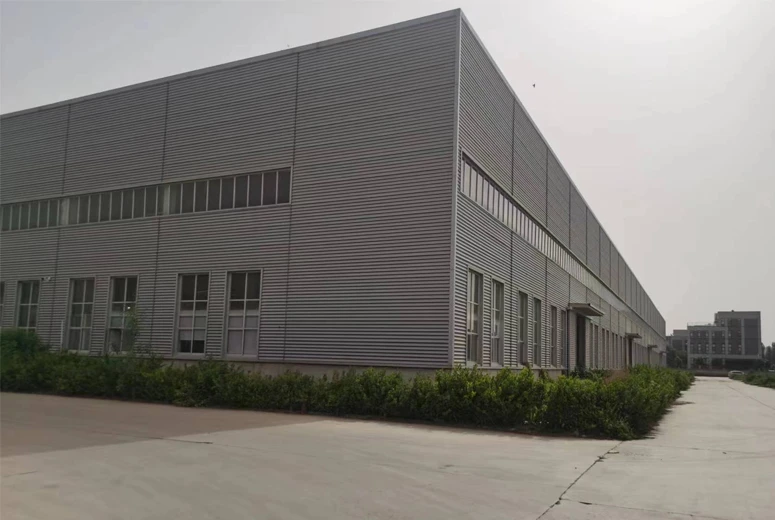Shutter Production Equipment for Efficient Manufacturing Solutions
The Evolution and Impact of Shutter Making Machines
In an era where automation and technology are revolutionizing industries, the production of window shutters stands out as a prime example of innovation enhancing traditional craftsmanship. Shutter making machines have become pivotal in the manufacturing sector, enabling the efficient production of high-quality shutters for both residential and commercial applications. This article explores the evolution, types, benefits, and environmental impact of shutter making machines.
Evolution of Shutter Making Machines
The history of shutter making machines dates back to the mid-20th century when the demand for window coverings started to rise. Traditional methods of handcrafting shutters, while effective, were time-consuming and labor-intensive. The introduction of machinery drastically changed the landscape of shutter production. Early machines focused mainly on cutting and shaping materials, but as technology advanced, so did the capabilities of these machines.
Today, modern shutter making machines integrate computer numerical control (CNC) technology, allowing for highly precise cutting, routing, and finishing processes. CAD (Computer-Aided Design) software contributes to designing custom shutters that cater to specific architectural needs. The evolution from manual labor to machine-assisted production not only increased efficiency but also opened doors to greater creativity in design.
Types of Shutter Making Machines
There are several types of machines used in the production of shutters, each designed for different stages of the manufacturing process.
1. CNC Routers These machines are integral to the cutting and shaping of shutter panels. They provide precision and can handle various materials, ranging from wood to composite materials.
2. Edge Banders After cutting, shutters often require edge banding to give them a finished look. Edge banders apply a layer of veneer or laminate to the edges of the panels, enhancing their durability and aesthetic appeal.
3. Drilling Machines For shutters that require mounting hardware, drilling machines ensure accurate hole placements, which is crucial for functionality and assembly.
shutter making machine

4. Finishing Machines These machines apply paint, stain, or protective coatings to the finished shutters. This step is essential for maintaining the quality and longevity of the product, protecting it from environmental factors.
Benefits of Shutter Making Machines
The benefits of employing shutter making machines are numerous. Firstly, the speed of production has significantly increased. Machines can operate continuously, producing large quantities of shutters in a fraction of the time it would take human labor alone. This not only reduces costs for manufacturers but also improves delivery times for customers.
Secondly, the consistency and quality of the shutters have improved. Automated machines minimize human error, ensuring that every product meets exact specifications. This level of precision is crucial in a market where quality is paramount.
Moreover, shutter making machines enable customization. With modern technology, manufacturers can easily modify designs to meet specific customer preferences, ensuring that each shutter fits perfectly within the intended space.
Environmental Considerations
As the world increasingly focuses on sustainability, the shutter manufacturing industry is also adapting. Modern shutter making machines are designed to minimize waste and energy consumption. Advanced software helps optimize cutting patterns, reducing off-cuts and ensuring that materials are used efficiently. Many manufacturers are now sourcing sustainable materials, such as reclaimed wood, and employing eco-friendly finishes, contributing to a smaller carbon footprint.
Additionally, recycling programs and waste management practices in factories help reduce environmental impact, making the industry more responsible.
Conclusion
The introduction of shutter making machines has transformed the manufacturing landscape of window coverings. By enhancing efficiency, quality, and customization, these machines not only meet the demands of modern consumers but also pave the way for sustainable manufacturing practices. As technology continues to evolve, the aesthetic and functional aspects of shutters will undoubtedly improve, offering homeowners and businesses alike a diverse range of options for enhancing their spaces. In a world where the blend of tradition and innovation is key, the shutter making machine stands as a testament to progress.
-
High Frequency Straight Seam Welded Pipe Production Line-BzZhou Xinghua Machinery Equipment Manufacturing Co., LTD.|line pipe steel&welded gas pipeNewsJul.30,2025
-
High Frequency Straight Seam Welded Pipe Production Line-BzZhou Xinghua Machinery Equipment Manufacturing Co., LTD.|High Precision&Automated SolutionsNewsJul.30,2025
-
High Frequency Straight Seam Welded Pipe Production Line - BzZhou Xinghua Machinery Equipment Manufacturing Co., Ltd.NewsJul.30,2025
-
High Frequency Straight Seam Welded Pipe Production Line-BzZhou Xinghua Machinery Equipment Manufacturing Co., LTD.|Precision Welding, High EfficiencyNewsJul.30,2025
-
High Frequency Straight Seam Welded Pipe Production Line|BzZhou Xinghua|Precision Welding&EfficiencyNewsJul.30,2025
-
High Frequency Straight Seam Welded Pipe Production Line - BzZhou Xinghua|Precision Engineering&EfficiencyNewsJul.30,2025


